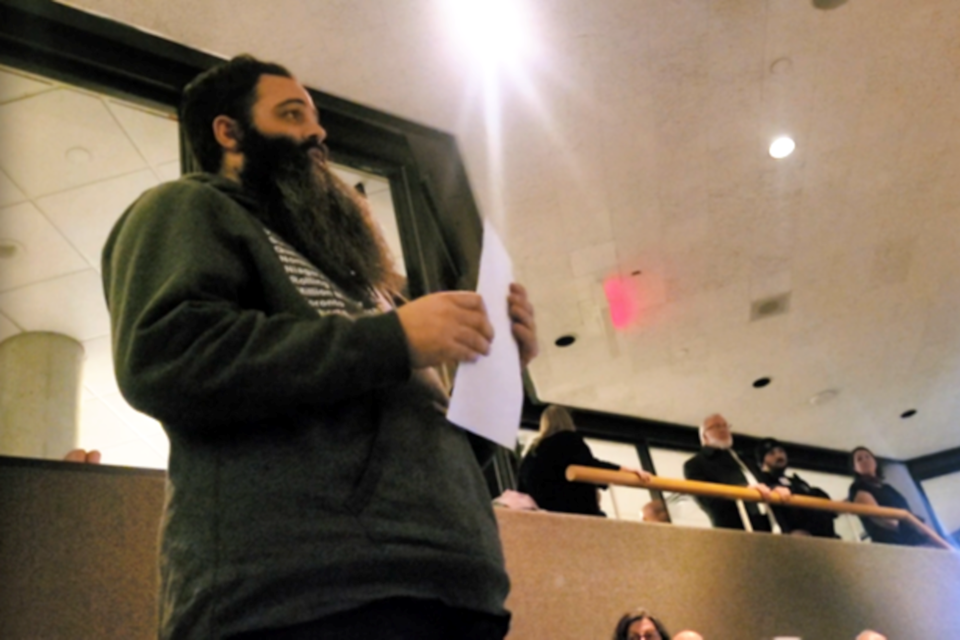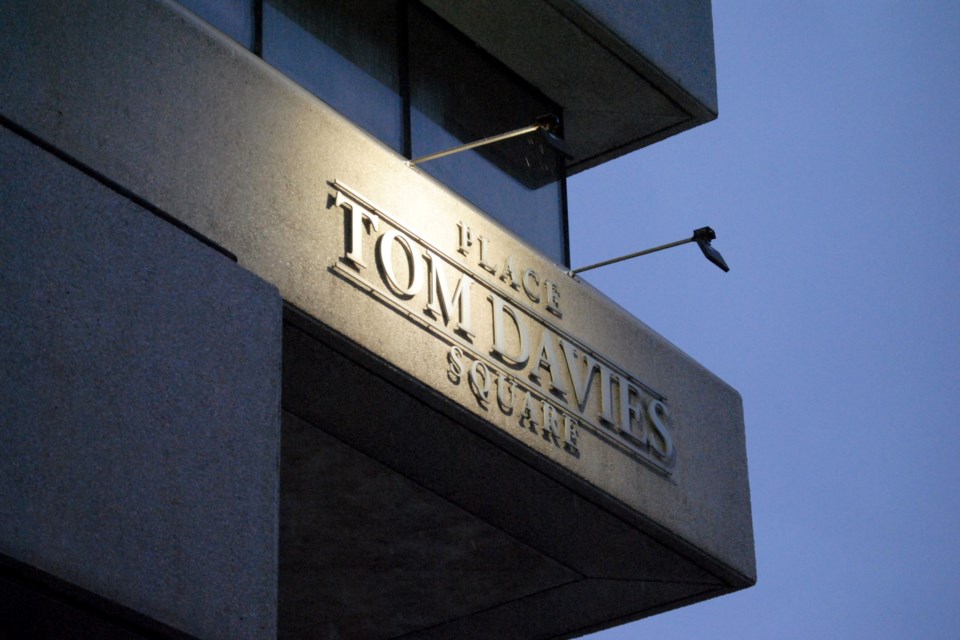The City of Greater Sudbury is “not yet on track for reaching net-zero by 2050,” according to a municipal report tabled city Strategic and Environmental Planning manager Dr. Stephen Monet.
This, his report notes, echoes various other governments around the globe, who have fallen short on their environmental goals.
“The city must continue to integrate climate change action into projects, plans and budgets,” according to Monet’s report. “In some cases, a shift in technology may be needed to increase the rate of progress, however, more commitment to energy efficient buildings, electric vehicles and renewable energy production is still required.”

“It’s a challenge,” Mayor Paul Lefebvre told Sudbury.com following Tuesday’s city council meeting, at which Monet’s report was discussed and city climate change co-ordinator Jennifer Babin-Fenske delivered a presentation on the subject.
The report in question included the city’s inaugural Climate Action annual report, for 2022.
Babin-Fenske said the report took some time because it was their first crack at it, but another report covering 2023 is expected to be published by the end of the year. This will be followed by annual reports in subsequent years.
During the 2022 election cycle, Lefebvre pledged support for the city’s Community Energy and Emissions Plan, but criticized it for not including attainable short-term goals on the path toward 2025.
The city’s inaugural Climate Action annual report, which Lefebvre credits the previous incarnation of city council with requesting, is a solid step toward setting out stepping stones toward 2050.
“2050, even though it looks really far upon us, it’s certainly going to be very quick upon our generation,” he said, adding that measuring changes on an annual basis will help pinpoint which actions the city needs to take to affect the greatest change.
Key challenges, according to Monet’s report, will be upgrading and retrofitting the municipality’s buildings and equipment so they’re more environmentally friendly.
In 2019, the city’s elected officials unanimously voted to declare a climate emergency in 2019, which led to the Community Energy and Emissions Plan (CEEP), which includes various environmental goals underpinned by achieving net-zero emissions by 2050.
Last year, the city adopted the Community Climate Change Adaptation Plan (CCCAP), which operates in concert with the CEEP.
Whereas the CEEP centres on mitigative measures for Greater Sudbury to do their part to prevent climate change, the CCCAP centres on adaptation — “managing the unavoidable.”
“We know we can’t necessarily reach zero emissions, but we want to reduce our emissions and be as efficient as possible, so what we do emit by 2050 is counteracted and can be counteracted by carbon sequestration, tree planting, renewables and things like that,” Babin-Fenske told city council on Tuesday.
The net-zero emissions goal encompasses City of Greater Sudbury operations, such as municipal buildings and GOVA Transit, and does not include all emissions within city limits.
Within the inaugural Climate Action annual report for 2022 are various accomplishments, including such things as adding 13 kilometres of cycling infrastructure, switching out all streetlights to LED bulbs and planting 145,000 seedlings (including the 10-millionth tree in the city’s decades-long regreening efforts).
It also lays out various CEEP and CCCAP actions, and what the potential barriers are, ranging from minor to major, with most barriers classified as budgetary in nature.
The only CEEP goals with “major” barriers are electric vehicle procurement and the creation of a bus rapid transit corridor design and construction.
CEEP Goal No. 9 is to electrify 100 per cent of transit and city fleet by 2035, and the rapid transit corridor falls under Goal No. 8: “Achieve 35 per cent active mobility transportation mode share by 2050.”
Status updates on all 18 CEEP goals, plus the actions recommended in the CCCAP, are included in the annual report.
Although Tuesday's meeting did not include any decision points of city council as it relates to the city’s climate action, two groups of people attended the meeting in separate showings of solidarity.
One side, led by the Coalition for a Livable Sudbury, attended the meeting to “call on city council to act urgently to reduce carbon emissions and protect our community from climate impacts,” according to their online petition, which 80 people signed.
This group cheered at one point in Tuesday’s meeting, which spurred Lefebvre to remind them to keep quiet during the evening’s proceedings.

The other group, led by members of the so-called Freedom Convoy movement, opposed the prospect of the city taking climate action. Similar to their behaviour during last year’s town hall meetings, the Freedom Convoy members were more disruptive.
Member Eric Bellefeuille stood up in council chambers to demand that city council allow them to speak. This, despite the fact they weren’t on the agenda as presenters and it was not a public hearing, so their speaking would have gone against city policies.
When Bellefeuille refused to stop speaking, Lefebvre called a five-minute recess for the disruptive members of the gallery to clear out of council chambers.
Prior to leaving, Bellefeuille handed a stack of print-outs highlighting his research into CO2 to be distributed to members of city council. Bellefeuille declined comment to Sudbury.com.
The following are the city’s 18 CEEP goals:
- Goal 1: Achieve energy efficiency and emissions reductions by creating compact, complete communities through infill developments, decreasing dwelling size through an increase in multi-family buildings, and increasing building type mix.
- Goal 2: Periodically increase the energy efficiency of new buildings until all new buildings in 2030 onward are Passive House energy efficiency compliant.
- Goal 3: The existing building stock is retrofit for 50 per cent increased energy efficiency by 2040 and large buildings are routinely recommissioned
- Goal 4: Achieve net-zero emissions in City buildings by 2040.
- Goal 5: Decrease energy use in the potable water treatment and distribution system by up to 60 per cent by 2050.
- Goal 6: Achieve 90 per cent solid waste diversion by 2050. An organics and biosolids anaerobic digestion facility is operational by 2030.
- Goal 7: Enhance transit service to increase transit mode share to 25 per cent by 2050.
- Goal 8: Achieve 35 per cent active mobility transportation mode share by 2050.
- Goal 9: Electrify 100 per cent of transit and City fleet by 2035.
- Goal 10: 100 per cent of new vehicle sales are electric by 2030.
- Goal 11: Reduce industrial processes emissions 50 per cent and mining sector energy use 35 per cent by 2040. All new mining vehicles purchased after 2030 are electric.
- Goal 12: Establish a renewable energy co-operative (REC) to advance solar energy systems and other renewable energy efforts of the CEEP.
- Goal 13: Install 10 MW of ground mount solar photovoltaic (PV) each year, starting in 2022.
- Goal 14: Install net metered solar PV systems on 90 per cent of new buildings and 80% of existing buildings, supplying 50 per cent of their electric load.
- Goal 15: Expand the downtown district energy system to 23 MW capacity.
- Goal 16: Install 50 MW of renewable energy storage.
- Goal 17: Procure 100 per cent of community-wide grid electricity and 75 per cent of natural gas demand from renewable sources by 2050.
- Goal 18: Increase the reforestation efforts of the Regreening Program.
The 2050 net-zero target will require the reduction of 1.6 million tonnes of emissions in the target year of 2050, according to the CEEP.
The city was estimated to have emitted 1,492,526 tonnes of carbon dioxide equivalent in 2021. They were projected to emit 1,634,108 tonnes of carbon dioxide equivalent, a drop Monet’s report attributes at least partially due to COVID-related restrictions.
Tyler Clarke covers city hall and political affairs for Sudbury.com.
